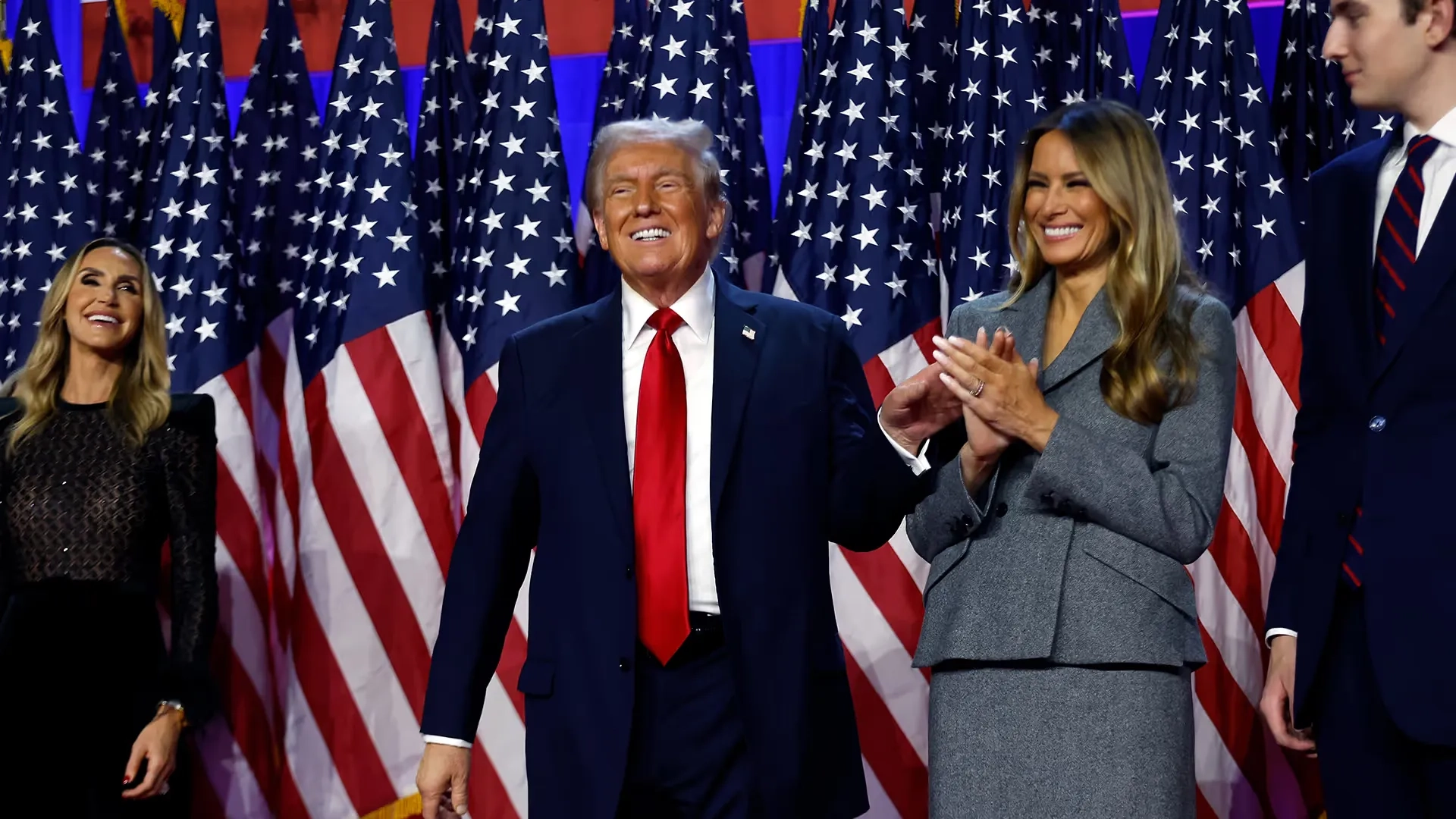On November 5, 2024, Donald Trump was elected as the 47th President of the United States. Following his victory, notably by significant margins in both the electoral college and the popular vote, some experts predict seismic shifts in U.S. immigration policy, to include action not only on illegal immigration but on legal immigration benefits including green cards and visas such as the H-1B.
In this article we will go over some of the potential changes, focusing on immediate actions, medium-term developments, and long-term objectives of the Trump administration.
Potential Immediate Immigration Changes Expected Starting January 20, 2025
Upon assuming office, President Trump may take a number of executive actions that could reshape portions of immigration policy immediately. These actions may include terminating discretionary programs such as Temporary Protected Status (TPS), Deferred Action for Childhood Arrivals (DACA), and the Biden administration’s Parole-in-Place (PIP) expansion, which would directly impact immigrants currently relying on these protections. Trump may also consider reinstating policies from his prior term, such as the "Remain in Mexico" policy, which would require asylum seekers to wait outside the U.S. while their cases are processed, a policy seen during his first term, which the Biden administration sought to reverse but was blocked by the courts from discarding.
Additionally, enhanced border enforcement measures, including the controversial family separation policy for those crossing illegally seen during the first Trump administration, could return as a deterrent against unauthorized immigration. Immigration and Customs Enforcement (ICE) is also likely to implement stricter enforcement actions in the interior of the country, including worksite raids, aimed at deporting those with existing removal orders and placing many thousands more in removal proceedings, potentially leading to a significant rise in deportations. Trump has already announced that Thomas Homan, a former head of ICE who has a hard-line reputation, will be the new border control czar and plan the overall execution of the promised mass deportation program. Another area to watch is increasing federal pressure on local law enforcement to hold any person arrested (for any reason) who is found to be unlawfully present, with a detainer to allow for transfer to ICE custody after their processing through the criminal justice system is concluded.
Mid and Longer-Term Impact on Immigration
Trump’s presidency will likely have a mid-and long-term impact on immigration. His administration's approach is expected to increase enforcement overall and push for lower levels of all types of immigration, including reductions in many green card categories and potentially nonimmigrant visas such as the H-1B. One proposal that has previously been put forward but hadn’t yet gained serious traction and could be resurrected again would be an overall revamping of the immigration system towards a merit-based system, reflecting a substantial departure from current family-based immigration priorities that emphasize family unity as a key value.
What Would Take More Time
In the mid-term, Trump’s administration may intensify efforts to enforce removal orders for individuals already within the U.S. but with existing deportation orders. There are estimated to be hundreds of thousands, if not just over a million, of such individuals. This approach could involve targeted “roundups” aimed at identifying and processing these individuals, likely increasing the visibility of deportation efforts nationwide. Alongside these efforts, Trump has signaled plans for a massive expansion of the entire deportation infrastructure. This could entail hiring additional immigration judges, expanding detention facilities, potentially building specialized detention camps, and increasing the workforce of ICE agents and trial attorneys. Together, these actions would enhance the federal capacity to process immigration violations. Practical considerations including a projected very high cost of such as expansion, political fallout, and court challenges, may hinder such an ambitious effort.
Enforcement on the employer side may also see a substantial rise, with increased raids expected across industries relying on immigrant labor. Such measures could heighten compliance requirements for businesses, leading to stricter enforcement protocols and potentially significant operational costs for non-compliance. On a state level, Trump’s administration may also encourage or support states in enacting their own immigration enforcement initiatives. This could include enabling state police to participate in immigration enforcement or promoting legislation that authorizes state actions targeting those unlawfully present. ICE will seek to place immigration detainers on any person without legal status who is apprehended by local or state law enforcement in the course of their ordinary police work. This will lead to some conflict insofar as a number of cities, including major cities, have refused to allow their police to hold noncitizens for transfer to ICE custody, at least in many situations. In the past, this has led to a political standoff with the first Trump administration, through Jeff Sessions as the then-Attorney General threatened to withhold federal grants to local police departments that refused to cooperate with ICE.
Further administrative shifts may involve the U.S. Citizenship and Immigration Services (USCIS) issuing an increased number of RFEs across various case types. This would likely complicate the adjudication process, slowing down case resolutions and adding administrative burdens on applicants and attorneys alike. Also, a renewed emphasis on the public charge ground of inadmissibility, including a possible return of the Form I-944 Declaration of Self-Sufficiency or a similar form, is a distinct possibility.
Long-Range Objectives
Over the long term, Trump’s administration has indicated intentions to reduce overall immigration levels, including family-based and employment-based categories. This could involve the phasing out of the Diversity Visa Program (the so-called “green card lottery”), a steep reduction in visa numbers for certain family-based immigration categories, and the elimination altogether of other categories, such as those for siblings, parents, and adult children of U.S. citizens. Such measures would fundamentally shift U.S. immigration priorities by focusing less on family reunification and more on economic or skill-based entry criteria.
Efforts to establish a merit-based immigration system, which would require passage of comprehensive legislation through Congress (possible if Republicans in both chambers), could further transform U.S. immigration policy. This would prioritize applicants based on skills, qualifications, and industry needs over familial connections, potentially decreasing the overall number of family-based admissions. The “merit-based” approach, a long-time goal for Trump, aims to align immigration more closely with workforce demands and the economic needs of specific industries, potentially reshaping the demographic makeup of future immigrants to the U.S.
Possible Impact on H-1B Visas
The Trump H-1B policies are expected to bring in stricter regulations for H-1B visa holders. This may include increased scrutiny during the application process, higher wage requirements, imposition of the requirement to make a showing that they are not a public charge, and more rigorous enforcement of compliance measures on the part of both employers and employees alike. Such changes aim to prioritize American workers and reduce perceived abuses of the H-1B program.
While specific changes to the numerical caps have not been announced, as such would require passing legislation and the new Congress is not yet seated, the incoming administration’s focus on tightening eligibility criteria and increasing compliance measures could effectively reduce the number of H-1B visas issued. By imposing higher standards and stricter enforcement, the overall pool of eligible applicants may decrease, leading to fewer visas granted.
In addition to that, the tech industry, which heavily relies on H-1B visa holders for specialized talent, may face challenges in filling critical positions. Stricter visa policies could lead to talent shortages, potentially slowing innovation and growth. Companies may need to invest more in domestic talent development or consider relocating operations to countries with more favorable immigration policies, which ironically would be detrimental to the U.S. workers the new administration wants to protect.
Possible Impact on Green Cards
The administration may seek to reduce family-based immigration by limiting eligibility to immediate family members, such as spouses and minor children while phasing out categories for extended family members like siblings and parents of U.S. citizens. This shift aims to prioritize merit-based immigration over family reunification.
Employment-based green card policies may also undergo changes, with a potential emphasis on attracting highly skilled individuals in specific industries. The administration could implement a points-based system that evaluates applicants based on education, work experience, and other factors, potentially altering the current allocation and number of employment-based green cards issued.
During Trump’s first administration, he sought to limit the ability of nationals from certain countries to participate in the Diversity Visa Program and announced his desire to end the program entirely. We can expect to see a return of debate on this issue as well.
Possible Impact on Broader Foreign Relations
Certain countries, such as India, which is a significant source of H-1B visa holders, may experience diplomatic tensions due to stricter U.S. visa policies. Reduced visa approvals could impact the Indian IT sector and professionals seeking opportunities in the U.S., potentially leading to negotiations or policy adjustments between the two nations.
There is also the distinct possibility of a return of executive order like the Muslim ban, seeking to broadly deny admission to nationals of certain countries deemed unfriendly to American interests by the new administration, which was the subject of three separate executive actions beginning in 2017 followed by much litigation.
All in all, the Trump green card policies could have nations seeking to negotiate more favorable terms for their citizens or adjust their own immigration policies in response, potentially leading to shifts in international relations and migration patterns.
Implications for Immigration Lawyers
As immigration policies under Trump evolve, individuals and businesses are likely to seek legal assistance to navigate the complex landscape. Immigration lawyers may experience increased caseloads, particularly concerning visa applications, compliance issues, responses to Requests for Evidence (RFEs), and enforcement actions like institution of removal proceedings and execution of existing removal orders for many individuals.
In addition to that, legal professionals will need to stay informed about new policies and regulations to effectively advise clients. Continuous education and adaptation to policy changes will be essential to provide accurate and timely guidance.
New immigration policies from the Trump administration will necessitate that lawyers have to expand their skills, such as proficiency in immigration compliance, policy analysis, and strategic planning. Utilizing advanced case management software and immigration workflow automation tools can help legal professionals manage increased workloads efficiently, allowing them to focus on providing high-quality legal services amidst changing policies.
Docketwise Supports Immigration Lawyers
In times of significant policy shifts, Docketwise stands as a critical tool for immigration lawyers, helping them manage the complexities of a changing immigration landscape. With case tracking, form automation, customizable reporting, customizable workflows, and other practice management features, Docketwise enables attorneys to streamline their processes and deliver reliable service despite increased caseloads and regulatory demands.
Docketwise’s case tracking system allows lawyers to follow every detail of a case from start to finish, ensuring no deadline or document is missed. This organized approach is invaluable as lawyers navigate frequent policy updates and rising demands. Additionally, Docketwise’s immigration forms automation saves time and minimizes errors by auto-populating client data into commonly used forms, allowing lawyers to focus on strategic casework rather than repetitive paperwork.
Supporting the full scope of practice management, Docketwise also helps with client intake, scheduling, billing, and document storage, creating an all-in-one solution that enhances both efficiency and accuracy. As immigration lawyers face shifting policies and heightened client needs, Docketwise provides the resources to keep their practices organized, their cases on track, and their clients well-supported through every stage of the legal process.
Schedule a free demo to boost your law firm efficiency today.
Carve Your Niche in Immigration Law
Unlock the potential of your personal brand and set yourself apart in the world of immigration law. Harness the tools, strategies, and insights to become the go-to expert in the immigration law landscape.
Download Now
About the author

Michael MielloContent Writer
